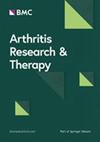Latent class analysis identifies distinct pain phenotypes in newly diagnosed systemic juvenile idiopathic arthritis
IF 4.9
2区 医学
Q1 Medicine
引用次数: 0
Abstract
Patients with systemic juvenile idiopathic arthritis (sJIA) exhibit highly heterogeneous pain manifestations, which significantly impact their quality of life and disease prognosis. An understanding of the pain phenotypes for this disorder and their influencing factors is crucial for individualized pain management. To explore the pain phenotypes of newly diagnosed sJIA patients via latent class analysis (LCA), analyse the influencing factors of these phenotypes, and evaluate the impacts of different pain phenotypes on short-term inpatient outcomes. A retrospective cohort study was conducted by collecting the electronic health records of 165 patients who were first diagnosed with sJIA at the Children’s Hospital of Chongqing Medical University from January 2018 to July 2024. Patient pain characteristics, laboratory indicators, and inpatient outcome data were extracted. LCA was used to identify pain phenotypes, and multivariate logistic regression was used to analyse the influencing factors. The Lanza–Tan–Bray method and the data combination analysis technique were applied to evaluate the relationships between pain phenotypes and clinical outcomes. LCA categorized the pain phenotypes of sJIA patients into three distinct classes, including (1) Class 1: inflammation-related moderate to severe pain with functional impairment (53.9% of patients); (2) Class 2: mild intermittent pain with extra-articular symptoms (19.4% of patients); and (3) Class 3: no joint pain with mild functional impairment (26.7% of patients). The analysis revealed that age (P = 0.023) and serum IL-10 levels (P = 0.047) were significant factors influencing pain phenotypes. Significant differences were observed among different pain phenotypes in terms of hospital stay duration, intrahospital department transfer rates, and pain status at discharge. Pain in sJIA patients can be classified into three distinct phenotypes, which are influenced by factors such as age and IL-10 levels. The identification of these pain phenotypes has important clinical significance for developing individualized pain management strategies.潜在类分析确定不同的疼痛表型在新诊断的系统性幼年特发性关节炎
全身性幼年特发性关节炎(sJIA)患者表现出高度异质性的疼痛表现,严重影响患者的生活质量和疾病预后。了解这种疾病的疼痛表型及其影响因素对于个性化疼痛管理至关重要。通过潜类分析(latent class analysis, LCA)探讨新诊断sJIA患者的疼痛表型,分析这些表型的影响因素,评估不同疼痛表型对短期住院预后的影响。回顾性队列研究收集2018年1月至2024年7月重庆医科大学儿童医院首次诊断为sJIA的165例患者的电子健康记录。提取患者疼痛特征、实验室指标和住院预后数据。采用LCA识别疼痛表型,采用多因素logistic回归分析影响因素。采用Lanza-Tan-Bray方法和数据组合分析技术评估疼痛表型与临床结果之间的关系。LCA将sJIA患者的疼痛表型分为三类,包括(1)第一类:炎症相关的中至重度疼痛伴功能障碍(53.9%的患者);(2)第2类:伴有关节外症状的轻度间歇性疼痛(19.4%);(3) 3级:无关节疼痛,伴有轻度功能障碍(26.7%)。分析显示,年龄(P = 0.023)和血清IL-10水平(P = 0.047)是影响疼痛表型的显著因素。在住院时间、院内转院率和出院时疼痛状态方面,不同疼痛表型的患者观察到显著差异。sJIA患者的疼痛可分为三种不同的表型,受年龄和IL-10水平等因素的影响。这些疼痛表型的识别对于制定个性化的疼痛管理策略具有重要的临床意义。
本文章由计算机程序翻译,如有差异,请以英文原文为准。
求助全文
约1分钟内获得全文
求助全文
来源期刊

Arthritis Research & Therapy
RHEUMATOLOGY-
CiteScore
8.60
自引率
2.00%
发文量
261
审稿时长
14 weeks
期刊介绍:
Established in 1999, Arthritis Research and Therapy is an international, open access, peer-reviewed journal, publishing original articles in the area of musculoskeletal research and therapy as well as, reviews, commentaries and reports. A major focus of the journal is on the immunologic processes leading to inflammation, damage and repair as they relate to autoimmune rheumatic and musculoskeletal conditions, and which inform the translation of this knowledge into advances in clinical care. Original basic, translational and clinical research is considered for publication along with results of early and late phase therapeutic trials, especially as they pertain to the underpinning science that informs clinical observations in interventional studies.
 求助内容:
求助内容: 应助结果提醒方式:
应助结果提醒方式:


